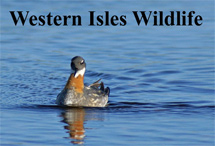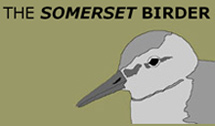Weekly review: 11 - 17 April 2012
Here we are again then, as the rain comes down, all pitter-patter on the window, a chilly westerly blows outside and the weather forecast suggests that nothing’s going change, not this week or next week….and, funnily enough, this week was rather like last week and, truth be told, it really has been much of a muchness….be it birds or weather.
But, and there’s always a but, a look through the cast of mid-April all-stars still presents a pretty hefty roll call of honour and although the weather was pretty indifferent, even for a month that is so typically “a bit of this & a bit of that”, those who had the time could collect a rather nice selection of scarcities and rarities and even the occasional full-on mega.
“Make the most of it” is the doom-mongers cry ~ those long-term forecasters suggest a run of rippling Atlantic depressions dominating with WSW ~ SW winds and changeable conditions to the month’s end so, effectively, closing shut the door for many migrants. The longed for spring parade of new arrivals, the veritable migration carnival, will be on hold for a while but as we always know, they will come…..
….and, of course, there’s always a sneaky surprise or two to be had, especially when you least expect it…..
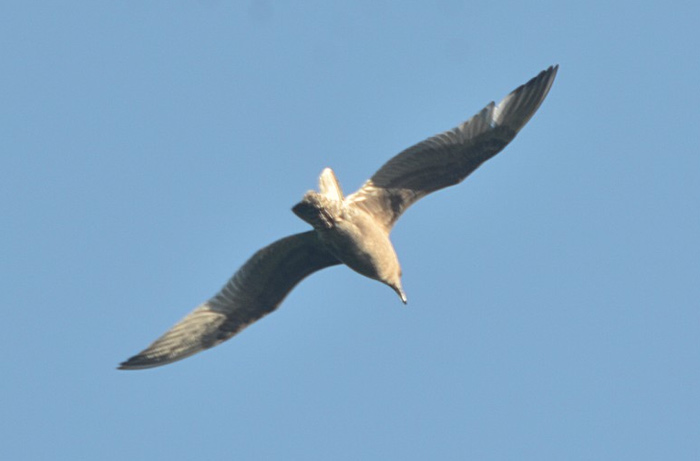
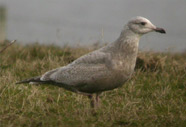
BOU/IRBC Status: A1
RBA status: Extremely rare
Accepted British records: 0
Accepted Irish records: 6
Most recent accepted record:
5th-19th March 2005 - Barnatra, Belmullet, Co.Mayo
At the northern edge of Lincolnshire, the much discussed, much debated and much observed Thayer’s Gull was in playful mood again this week ~ a little bit more of the old cat & mouse routine to keep ‘em guessing.
After frustrating many with a disappearing act on the Easter Saturday and Sunday, the bird popped up again at the end of last week’s review period and was still present, near Elsham on 11th. Two days of negative news followed and then that seemed to be that, until, Lazarus-like, it was seen again on 17th, a dawn flight over Saxby All Saints was followed by another appearance at Elsham later the same morning.
Interest in this particular Thayer’s (-type) was rather slow at first (“it’s only a grotty gull” the rallying cry for many), despite the rather convincing back-of-the-camera shot of finder Tom Lowe, featured here a couple of weeks ago. As the wheels began to turn over the Easter weekend, a bird that appeared to be an outstanding candidate was drawn (inevitably) in to the increasingly sticky mire of exactly what is a Thayer’s Gull.
Assorted noted gullerarti could be found in the darkest recesses of the online birding community, discussing the pros and cons of the Lincolnshire bird and then taking many other accepted records and strong claims (from both Ireland and the UK) in to the expanding debate which, inevitably broadened in to an Atlantic-sized discussion.
Resolution seems some way off ~ but, as was touched upon here last week by Andy Stoddart, perhaps the parameters of what constitutes an acceptable Thayer’s Gull may need to be reviewed once more (in favour of a more liberal approach ~ these larger larids are renowned for their variability).
Either way, the Lincolnshire individual certainly appears to have the required “suite of characters” for the species and although some have dismissed it as being a “dark one”rather than a “classic” one”, it would surely fit in to any committee’s remit for Thayer’s Gull (which, you could argue, hasn’t been the case with some accepted Thayer’s on the European side of the Atlantic)….. uh-oh, here we go again…..
No such contention for the next couple of headline-makers thank goodness ~ both very straight-forward.
On St. Mary’s, near the Lower Moors pumping station, the Northern Waterthrush was still showing this week and still showing no intentions of taking its leave of the island just yet.
Found on September 16th last year, this wonderful bird was still present on April 16th, and has now clocked up a record breaking 213 days so far in its seven month stay.
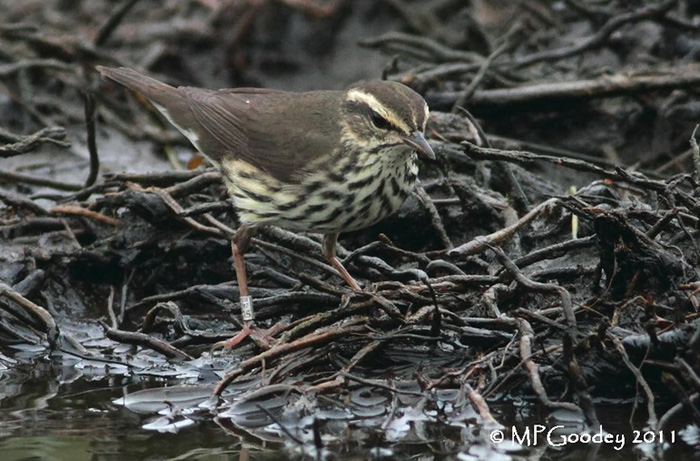
With rather fewer days on its tally (though 44 days isn’t to be sniffed at) the first-winter Greater Yellowlegs was still in situ at the RSPB reserve at Loch of Strathbeg this week, still present to 16th. Visitors to Strathbeg this week have also been treated to the arrival of three Common Cranes as well as the lingering drake Green-winged Teal ~ a nice notebook full….
Bookending the straightforward American warbler and wader is the second of the rather more contentious headliners of the week (indeed the last couple of weeks)…..there’s no debate regarding the identity of the drake Falcated Duck on the Mullet’s Cross Lough, but the whole provenance carry-on is something entirely different.
It appears to have done the decent thing and taken its leave ~ last seen on 11th ~ and, assuming it has gone rather than not having been looked for, its now down to the IRBC to see what they think. A look at BBRC secretary Nigel Hudson’s fascinating “Work in Progress” files show a couple of British Falcated Ducks back in the mix again, so who knows…..
….and, after all, an armchair tick is still a tick ~ bring ‘em on! We’ll be left teetering on the edge for a while, but who knows, there may be a positive message in the end……
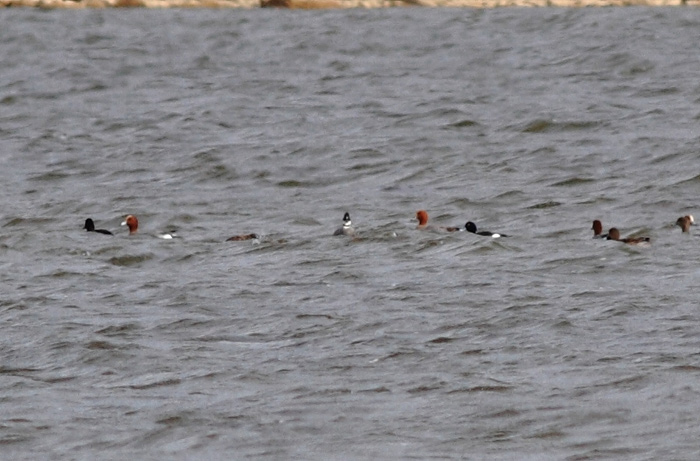
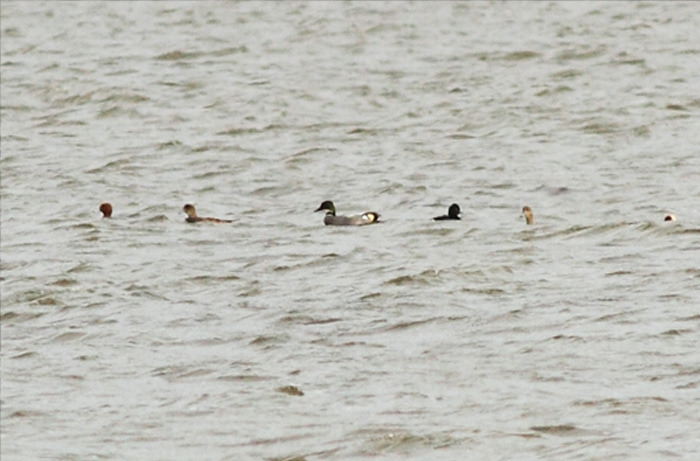
Four single White-billed Divers were seen during the week, all of them way, way to the north ~ one was on Loch Ewe, near Poolewe in Highland from 11th-13th with further birds seen off Burghead (Moray) on 12th, still off Portsoy (Aberdeenshire) on 15th-17th and, back in Highland, off Mellon Udrigle on 16th.
The only other seabirds of any note were a lone Pomarine Skua seen off Portland Bill on 14th and a Little Aukoff Spurn on 17th.
In Ireland, the first-summer Purple Heron remained at Seafield, near Bunmahon in County Waterford for another week, still present on 17th. A single Night Heron was seen this week, an adult flying over Bosistow Farm, Polgigga (Cornwall) at lunchtime on the 15th.
It was pretty much Groundhog Day for the just-under-a-dozen Glossy Ibis that were reported over the last seven days. The only new bird was reported from Ormesby Broad in Norfolk, one there on Friday the 13th. Otherwise it was all of the usual suspects on offer ~ in Pembrokeshire the three musketeers remained at Marloes Mere until 16th at least, with further, long-staying singles on offer from the Outer Hebrides to Dorset and north Wales to Essex and Suffolk.
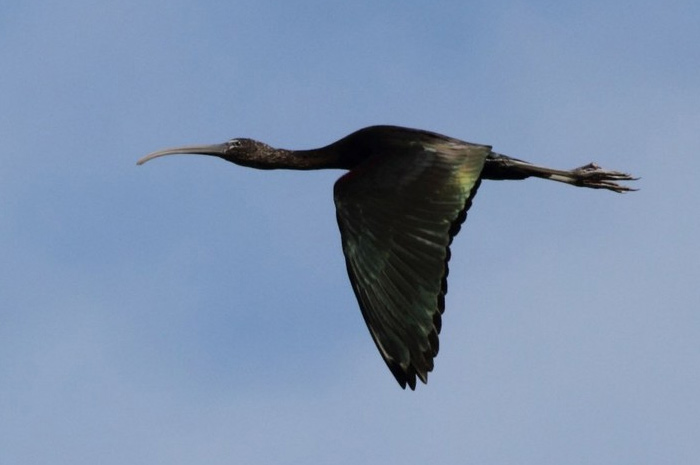
Two Cattle Egrets remained at Bannow Bay (Co. Wexford) until 16th, with further records received this week from Lytchett Bay in Dorset (one there to 13th), at Chigborough Lakes and Maldon in Essex (from 14th-16th) and at the Walmsley Sanctuary in Cornwall (also to 16th).
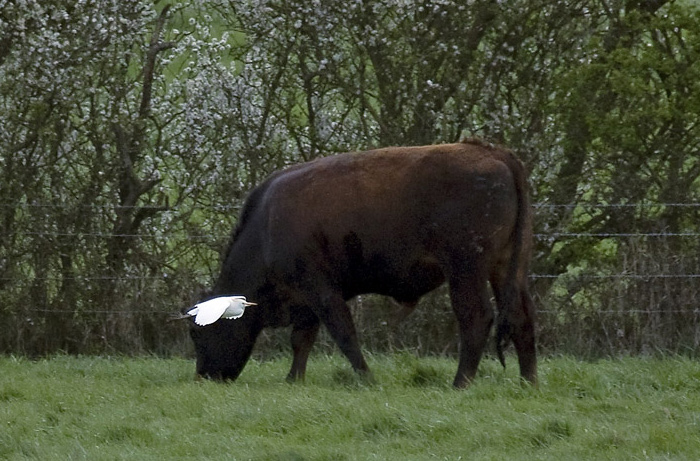
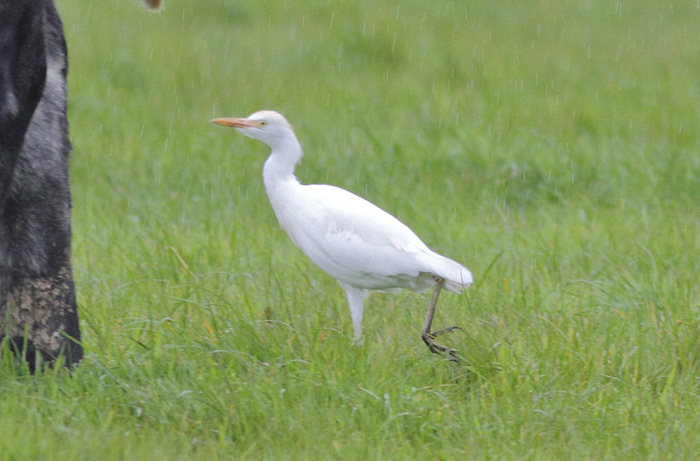
The 3 C’s hosted Great White Egrets this week ~ Cumbria, Cheshire (one or two there) and Cambridgeshire with others noted at Earls Barton (Northamptonshire) from 11th-15th, over London’s Richmond Park on 14th and the M25 in Buckinghamshire on 16th (well it makes a change from being distracted by your mobile on a motorway I suppose)……and one of several birds noted in Somerset in the winter remained on the Levels to 17th.
Aside from the three Common Cranes that decided to get the Greater Yellowlegs on their lists at Loch of Strathbeg, further Grus records of note included another trio tracked along the coasts of Lincolnshire and then Norfolk on 12th (taking around half an hour to cross the Wash ~ heading out from Gibraltar Point at 1.30 and hitting Holme just after 2pm). Another third threesome was noted in Derbyshire, over Dronfield Woodhouse, also on 12th while twos were noted over Coll (Argyll) on 13th, in Cheshire on the morning of 15th and Lothian and Lincolnshire on 16th. A lone Crane was seen over Vatersay on the Outer Hebrides on 12th (re-appearing on South Uist on 17th) and further singles were in Easy Yorkshire, Staffordshire and Northumberland.
Six Spoonbills were on the marshes at Cley on 16th (stopping off before edging their way a little further along the coast hopefully) and down in neighbouring Suffolk, four birds were seen at Havergate Island on 13th. Five Spoonbills were reported from Brownsea Island on 17th while two or three birds were seen in Hampshire during the week and two lingered in north Devon to 13th at least. Single birds were also noted in Essex and Cheshire.
As usual, it was hard to know which of the week’s White Storks had the feelgood factor. A bird at East Allington in south Devon on the morning of 11th may well have been the real deal, likewise the bird seen over Grove Ferry (Kent) on the evening of 17th, but after that, well……who knows?
Two birds were reported near Hessle in East Yorkshire on 11th and on 12th, singles were in Derbyshire and nearby Nottinghamshire (the latter a known escape). An unringed bird was reported from West Yorkshire the following day, and a ringed escapee was seen off by the local intelligentsia’s children at Tatton Park in Cheshire, also on 13th. This was presumably the bird seen over various bits of Greater Manchester and Lancashire on 14th-15th before settling at Tebay services, by the M6, in Cumbria late in the afternoon of the latter date.
The white and black geese are now long gone, but the Red-breasted Goose at Loaningfoot (Dumfries & Galloway) was still holding station (with 2,000 Barnacle Geese) until 12th. Keeping the same host species company elsewhere in Scotland were a couple of Richardson’s Canada Geese ~ one still on Islay, at Loch Gruinart from 11th-16th with another over on North Uist on 15th. A Black Brant was still being seen at Lurgan Green (Co. Louth) on 14th-15th.
A couple of new drake Blue-winged Teal were found this week ~ leading the way, in Somerset, came one at Ham Wall RSPB reserve on 11th-12th (in the company of both Shoveler and a rather handsome drake hybrid Shoveler, crossed with either a Cinnamon Teal or perhaps even a Blue-winged Teal….) while the second new bird of the week paid a brief visit to Lakenheath Fen during the morning of 15th. The drake in Scotland remained at Gilmourton (Clyde) to 16th and the long-staying female remained on the Amble Marshes (Cornwall) until 16th.
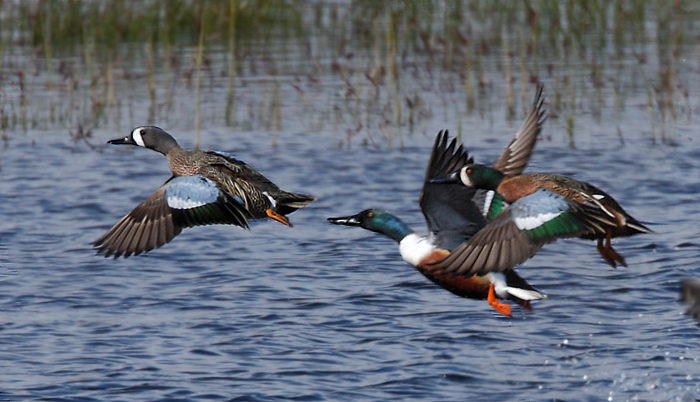
The drake in Somerset could become the first accepted county record in over 30 years, there are only two on the books ~ a drake in April 1981 and a female the following January. The hybrid with the intriguing potential parentage has been around since February and he certainly won’t queer the pitch for the Yankee Doodle Dandy….but he may be a pitfall for the unwary if he moves on.
There was a pretty even split for the week’s 11 drake Green-winged Teals ~ Scotland leading the way with five (two on mainland ~ in Aberdeenshire and Dumfries & Galloway, three on islands ~ still on Fair Isle, with one each for Islay and Tiree), with three in Ireland (one lingering at Tacumshin, one again at Quoile Pondage in Down and a new bird in Derry, at Lough Beg) while England also scored three ~ in Cleveland, Hampshire and another, new at Chew, on 17th.
The only American Wigeon of the week, a drake, remained at the Portmore Lough RSPB reserve to 11th and the only Lesser Scaup of the week, also a drake, was our old friend at Cosmeston Lake in Glamorgan, present to 15th. The week’s tally of half a dozen Ring-necked Ducks comprised of five drakes (two in Cornwall, one each for Kent, Norfolk ~ a new arrival at Barton Broad on 16th ~ and Lincolnshire) with a re-appearing female again at Blaxton (South Yorkshire) on 15th. In Wiltshire, a female Ferruginous Duck was at Langford Lakes from 11th-15th.
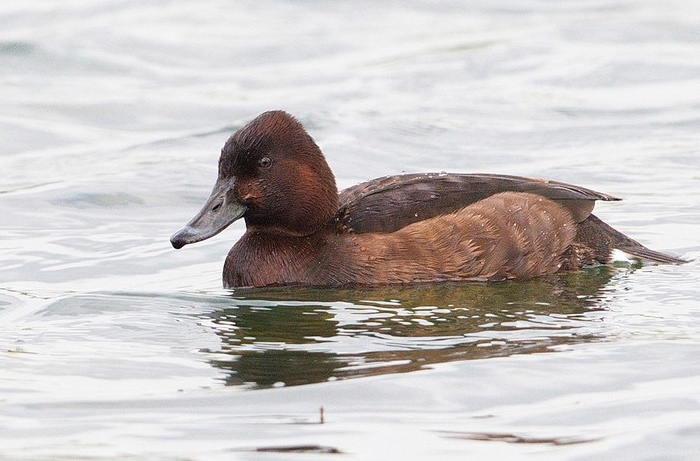
Still holding court amongst his less-gaudy relations was the drake King Eider on the Ythan Estuary, present from 11th-15th at least, while the only Surf Scoters noted were a drake off Ruddon’s Point (Fife) and a new female off the Martello tower at Balbriggan (Co. Dublin) on 15th.
What may prove to be Staffordshire’s first-ever Pallid Harrier, a juvenile, was reported flying west at Belvide Reservoir on the afternoon on 14th. A Black Kite flew over Denbury (Devon) on 13th with another reported from Hertfordshire the following day.
In West Sussex, the wintering Rough-legged Buzzard at Burpham was present for another week, seen to 16th at least, and was one of nine birds seen during the week. A returning bird (?) headed over Spurn on 11th, with singles in Kent, Norfolk and Lincolnshire the following day. A Breckland bird was at Weeting Heath on 13th, and further singles followed in Essex (on 14th), Suffolk (on 15th) and in Wicklow, at Glenealy, on 16th.
It was trading places time this week for the two Black-winged Stilts reported (no guesswork required with these for once) ~ the bird seen at Chew Valley Lake, at the end of the last week’s round-up period, made its way the 60 or so miles due south to Radipole Lake in Dorset, arriving there on the afternoon of 11th (occasionally in the presence of a Glossy Ibis too). It then moved a little way to the west, to Abbotsbury, where it lingered for the rest of the week.
The other Black-winged Stilt this week has put in a few more miles than the Somerset to Dorset bird….having last been seen at Tacumshin (Co. Wexford) on 10th, what appears to be the same bird pitched up in Oxfordshire, at Standlake, on 12th before moving some 90 miles to the NNE to Rutland Water in Leicestershire, on 13th. The restlessness continued, with an easterly flight of around 20 miles or so to Willow Tree Fen LWT reserve, between Bourne and Spalding, from 14th to the week’s end.
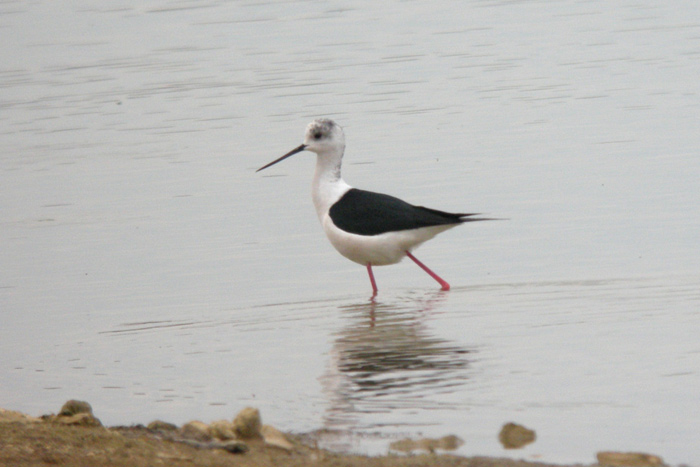
View Black-winged Stilt movements spring 2012 in a larger map
These roaming Stilts provided many respective county listers with the ideal chance for a “grip back”…..Dorset’s most recent Black-winged Stilts were two single birds seen in the spring of 1990. For Oxfordshire listers, its 1993 for them ~ three birds or four birds appearing in early June (colour-ringed in France) at Radley pits and staying for just under a fortnight (they were also seen in Cheshire and Anglesey).
That tracking theme continues ~ Leicestershire’s most recent Stilts were a one day pair on June 3rd 1987 (which had been seen in Warwickshire too), the only others in the county (also in Rutland) were two at Eyebrook Reservoir in 1945 (they may then have bred in Nottinghamshire). Lincolnshire listers last had the chance to see this charismatic species back in May 2006, another trio involved, up at Far Ings. They too were seen elsewhere ~ in Lancashire and Worcestershire).
Back at Chew, the adult Spotted Sandpiper was in no hurry to leave Somerset, present again for another week ~ found on September 24th, it is showing no signs of heading off yet, but its only a matter of time surely….
Further down the road, in the same county, at Meare Heath, the pair of first-winter Long-billed Dowitchers were also still in no rush to take their leave of their Somerset surroundings ~ they’ve clocked up a month in the area ~ while longer winter visitors this week included two still at The Cull in Wexford (present on 15th) and also again at Kidwelly in Carmarthenshire (also present on 15th). In Dorset, a Long-billed Dowitcher was found at Abbotsbury on 12th (the same date as the Stilt arrived).
The wintering Pectoral Sandpiper remained at Dundonald Camp (Ayrshire) for another week and Scotland also hosted two Dotterel, present at Carnbee (Fife) from 13th-16th ~ a single was at Rye Harbour NR on the morning of 11th.
In County Antrim, an adult Bonaparte’s Gull appeared at Larne on the evening of 11th and was presumably the wintering bird seen at Ballygalley (it had occasionally popped up at Larne through December, January and February too).
Staying in Ireland, there were seven Ring-billed Gulls reported during the week, with two adults on the Swords Estuary (Co. Dublin) on 14th and two youngsters (a first- and second-winter) in Doorly Park, Sligo on 16th. A first-winter remained at Bantry (Cork), the long-staying second-winter was still at Groomsport (Co. Down) for the week and in Waterford, at Ballyneety, an adult appeared again on 15th. The only other Ringo of the week was seen in Ceredigion, the second-winter still around the Teifi Estuary area to 14th.
No Easter getaway for a whole heap of Iceland Gulls ~ still dozens and dozens on offer ~ still easily nudging in to three figures. The high counts were pretty much where you’d expect them to be….16 at Stornoway harbour on 12th and 12 at Melvaig (Highland) on 16th were the week’s only double figure counts. Eight were noted around Scrabster, also on 16th and six were at Broadford Bay, on Skye, on 14th. One of the only Kumlien’s Gulls this week was also in Stornoway harbour, an adult there on 11th, with single juveniles at Beddington on 12th, Youghal (Co. Cork) on 13th and another adult at Lough Swilly in Donegal on 14th. The week’s tally of 30-35 Glaucous Gulls was made up entirely of ones and twos, several sites that hosted glaucoides also continued to host hyperboreu s.
We’ll kick off the passerine round-up for this week with a species that would rarely feature here ~ Ring Ouzel ~ a remarkable passage of which was noted this week, 100’s of birds spread far and wide with countless singles, twos, threes and fours reported along with some significantly larger groups too….
Numbers began to build, steadily, from 11th to 13th and that’s when some of the bigger tallies started to be noted. In Buckinghamshire, 13 were counted at Ivinghoe Beacon on 13th and were followed by 11 at Pegsdon Hills (Bedfordshire) on 15th, 16+ at Cleeve Hill (Gloucestershire) on 16th and another dozen were seen at Quainton Hill (Buckinghamshire), also on 16th.
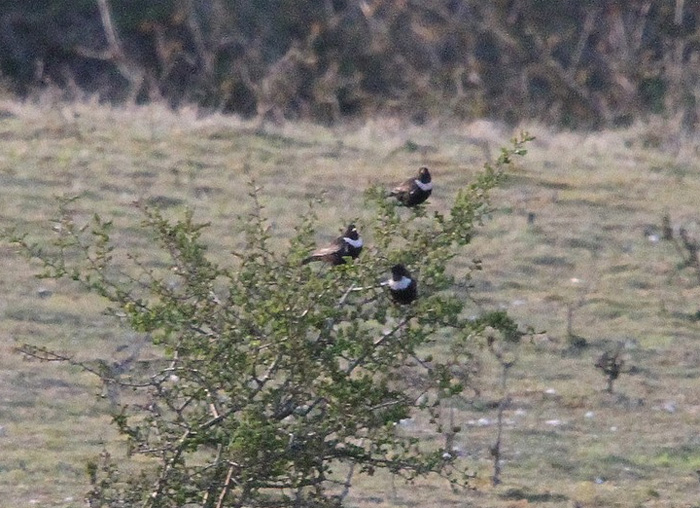
It was Norfolk though that prospered most ~ the week’s count for the county rattling up to a minimum of 91 ~ with nine each for Roydon and Horsey on 14th-15th, at least 11 around the side of the Hangs and Scribb Hill, near Cley on 12th and a whopping 20 on Syderstone Common on 14th.
It’s the best Ring Ouzel haul in Norfolk for decades and the Syderstone count has rarely been bettered ~ the highest recorded count in the county remains 27 at Winterton in April 1974, with April 22nd 1998 being a vintage day ~ 21 were at Snettisham, 17 at Cromer and 11 made it to Sea Palling. At least 21 birds flew over Hunstanton cliffs on April 10th 1993 and 20 were at Holme on April 16th 1988 (when 16 were also at Holkham).
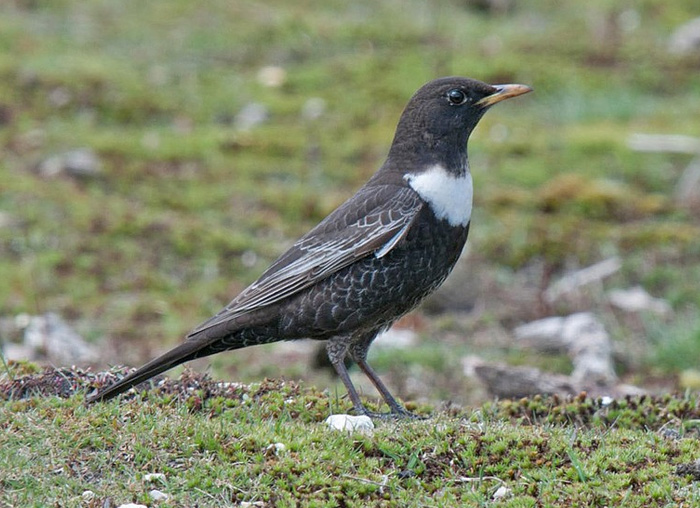
In West Sussex, what appeared to be the county’s first Iberian Chiffchaff was found, singing, at Apuldram, near Fishbourne during the afternoon of 17th. This rather “new” species is reported annually and accepted birds now number 25, to the end of 2010. They’ll presumably only get commoner too…..and so will “funny” sounding Chiffchaffs ~ and that’s what the verdict appeared to be with this one, for some at any rate….and then there’s the old two bird theory to deal with…..over to you Sussex birders!
The only other warbler of note this week was the singing male Yellow-browed Warbler that was enjoying life in the Worcestershire countryside until 16th at least. The same county also hosted one of the week’s few Hoopoes ~ just six seen countrywide (those dizzy figures of March a distant memory already) with the aforementioned county welcoming a suitably floppy-winged visitor to Salwarpe on 15th. Singles were seen at Durlston CP and Slimbridge on 13th and at Sandwich Bay (Kent) on 17th, with one still in the New Forest, at Bishop’s Dyke on 11th. The longest stayer of this week was last week’s left-over around the Waxham and Horsey area, still present to 16th.
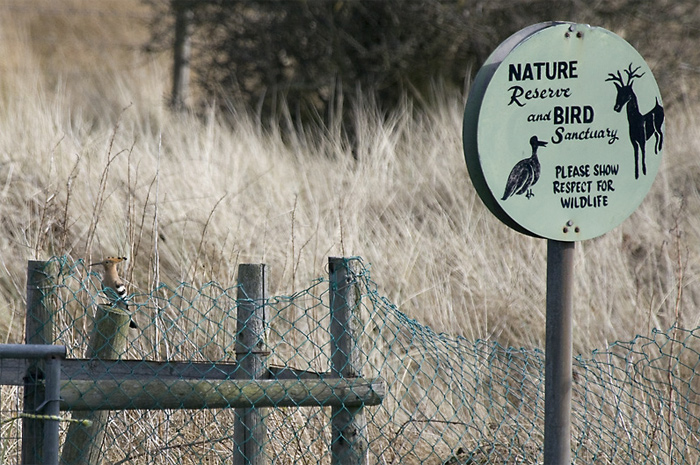
The same site offered a further touch of Mediterranean colour with last week’s Serin making another appearance on 14th. Meanwhile, across from the far east to the far west of Norfolk, another Serin was reported at Heacham on the afternoon of 16th, while in Suffolk, at Lowestoft, a singing male spent a couple of days around Lowestoft on 11th-12th. Two birds were also reported from East Sussex on 11th.
A couple of groups of Waxwings ensured that winter wasn’t to be forgotten just yet ~ those chilly temperatures made sure of that anyway….four were in Norwich on 12th and 22 loitered in Sheffield on 14th. Other winter birds included the Richard’s Pipit at Wyke Regis (Dorset) to 15th, the singing male Rose-coloured Starling at Hordle (Hamsphire) from 11th-16th with 14 Great Grey Shrikes making up the numbers ~ two each for Cross Inn Forest (Ceredigion) and Thursley Common (Surrey) and two singles each for Suffolk and Lincolnshire. Others were seen from Hampshire to Highland (taking in Warwickshire, Derbyshire, Lancashire and Angus).
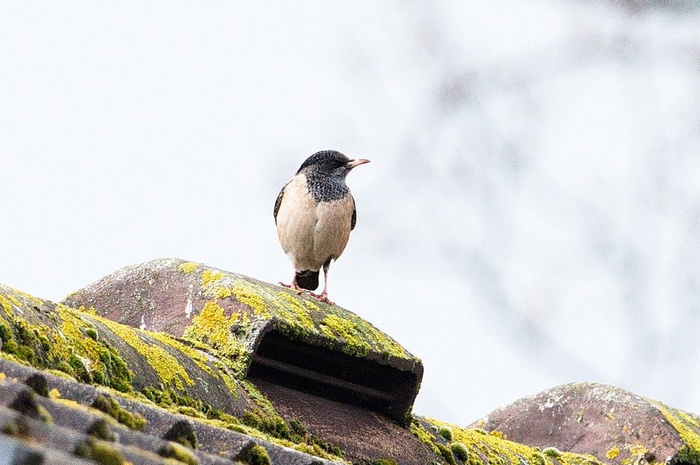
In Devon, a male Little Bunting remained at South Milton Ley throughout the week, while in Highland, an Arctic Redpoll was seen near Lochaline on 16th. There’s every chance that it could be a Hornemann’s Arctic Redpoll ~just like the fluffy wee beastie that was photographed on the beach at Sanaigmore, on Islay, on 10th. For those with a love of all things Carduelis, this is really the business ~ none of that shilly-shallying with pale Mealy/big-beaked Coues’s here ~ oh-no! Look at the size of this one!
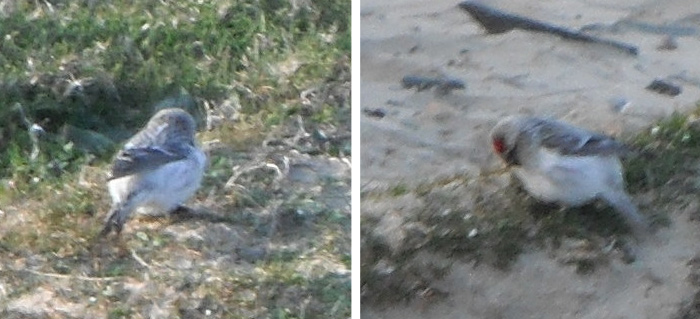
Spring Hornemann’s are still a pretty rare occurrence here (few English ones spring to mind ~ the bird on Brancaster golf course on 17th-18th April 1994 is perhaps most notable) but Redpoll guru (and RBA round-up author) Andy Stoddart has commented that “mid-April seems to be the perfect time to get hornemanni. In Iceland there’s a newly-recognised pattern of hornemanni appearing in mid-April (they don’t see them in the winter) which suggests that they’re returning migrants (but from where?)”.
Spring Hornemann’s are still a really rare occurrence here (few English ones spring to mind ~ the bird on Brancaster golf course on 17th-18th April 1994 is perhaps most notable, assuming it was Hornemann’s and not a Coues’s) but Redpoll guru Andy Stoddart has commented that “mid-April seems to be the perfect time to get hornemanni. In Iceland there’s a newly-recognised pattern of hornemanni appearing in mid-April (they don’t see them in the winter) which suggests that they’re returning migrants (but from where?)”.
Andy continues, “I’ve just been sent photos of one or two newly-arrived hornemanni, again from this week, from just north of Reykjavik. In other words the Islay bird seems to fit into an emerging pattern.”
“Given that they’re capable of wintering anywhere (most stay in N. Greenland) there must be plenty of potential for them to winter in Scotland, in mountain areas where nobody goes in winter. Presumably this Islay bird has wintered somewhere in Britain (even though we failed to find any arriving ones last autumn).”
Fascinating and compelling too ~ eyes open then for more and more of these marvellous snowballs ~ and, given their scarcity away from Shetland in autumn, a mainland Hornemann’s would certainly be very well received.
No clues yet as to what the week ahead may yield, but once the weather finally decides to tidy itself up a little, there’s no doubt that its going to be game on….
Mark Golley
18th April 2012


